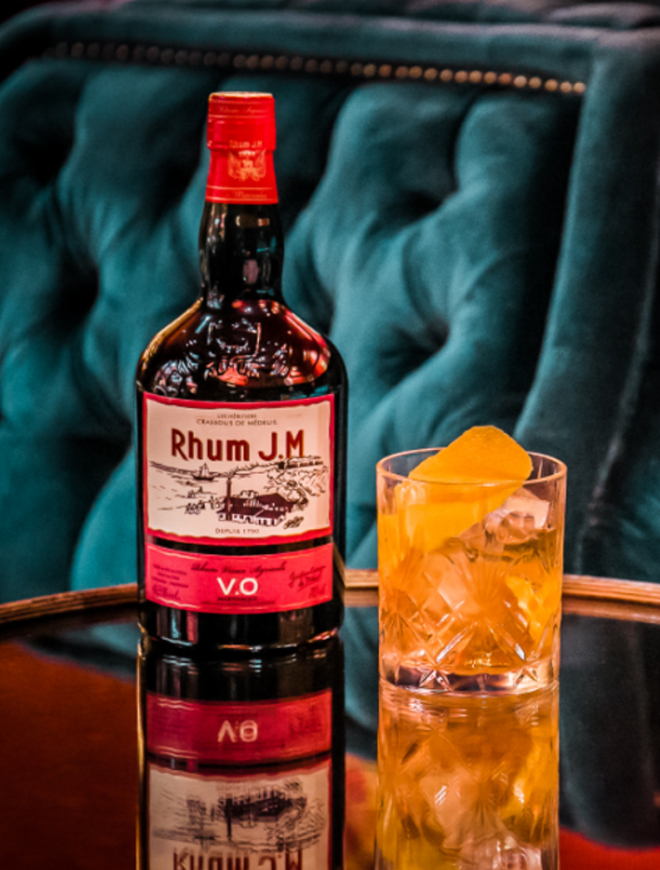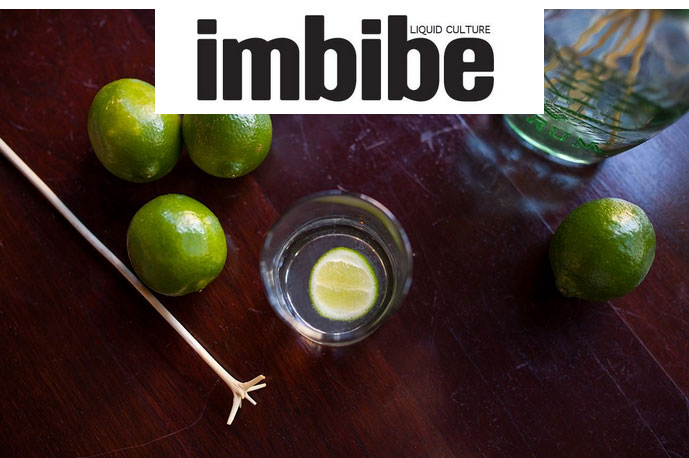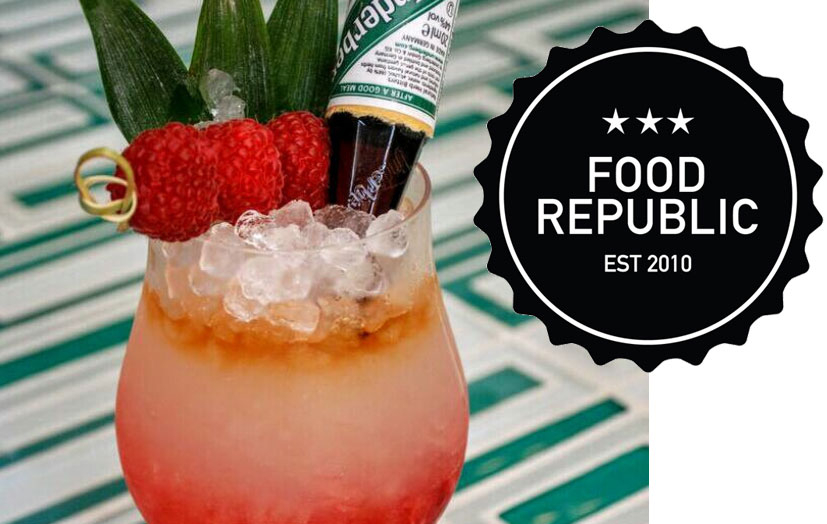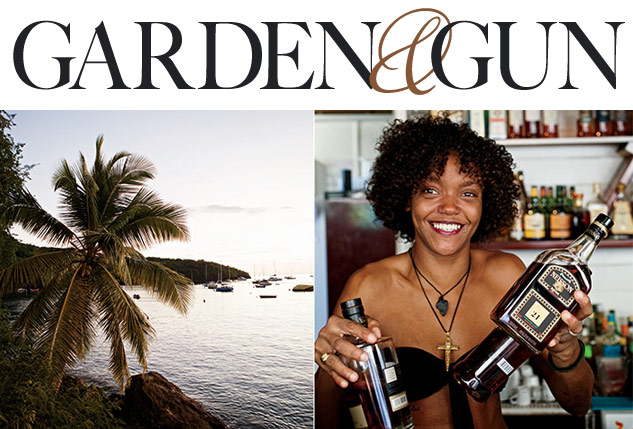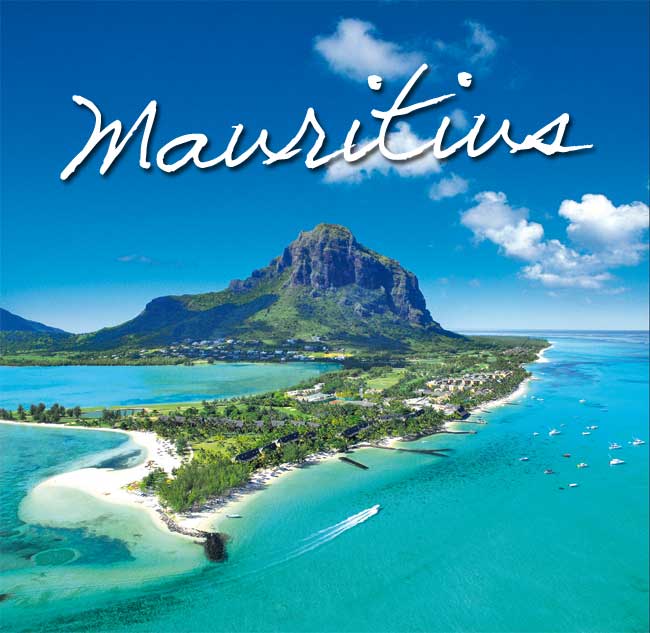
As we sit facing the sea, incredibly shaded in different hues of blue, one thing becomes instantly clear: in the laidback tropics, the only thing to consider drinking is, well, a tropical drink. I have visions of pina coladas and mojitos floating up in tall glasses as we soak in the salt and sand.
Not that I am a cocktail drinker, really — vino worshipper is more like it. And Mauritius does have its share of heavy-duty French, eminently drinkable South African pinotage, and Aussie red shiraz — both by virtue of its history and geography. It’s a country where the cultural heritage is as mixed up as the dazzling colours of the landscape. But as we lie on the white sand, or sail out into the deep blue with the breeze on our faces in a catamaran, it is inconceivable to think of a drink that doesn’t remind you of the sea.
At first, it is just pina colada. Endless glasses that taste innocuous enough. The first of the many I have on this trip is quite the definitive one: the cocktail is lighter than what I have known before; less coconut, more sugarcane juice, and there’s even a hint of vanilla (because, after all, this is also a pod country — both coffee and vanilla are abundant and it is advisable to take back some of both home). It is entirely possible to sit back on a deck chair or in the pool and sip your time away on this island. The perfect beach life.
It is on my second day in Mauritius, however, that I figure out the truth: it is rum, not rum-based cocktails, that defines life and lifestyle in this country. Sailors, pirates and the Carib: These are possibly the three words that spring to mind when you think rum. If you are from India, “Old Monk” would definitely be the other two (just trawl the depths of the internet and you will be shocked at the passionate poetry India’s best known, best loved liquor brand seems to have inspired). But regardless of whether you are acquainted with just the desi pleasures of “India’s national drink”, as it has been also described, or the super premium spirits from Barbados, Cuba et al, now trending globally, Mauritian rum will surprise you.
Rediscovery of Rum
Globally, rum is on the upswing. Much like the image makeover that gin and whisky got a couple of years ago, the rum story is being painted over by a better, brighter brush. Instead of the rough drink for sailors, aged and infused spirit is being packaged smarter, marketed harder and consumed with more gusto and pride than ever.
“There is an increasing general interest in flavours across the spirits industry, which has benefitted rum as well, opening up new avenues for the drink. And these are both in the dark and white rum categories,” says Lisa Srao, founder of I Brands Beverages, an affordable luxury liquor startup. The Bengaluru-based company manufactures and distributes alcoholic beverages in India. “As it is a sugar-based product, it mixes well with fruit juices or cocktails, which has a positive impact on the category.
Drinks like mojitos and daiquiris are very popular with women too,” adds Srao, while pointing out that the spirit is usually appreciated by “those who know their drink”. Are there any “rules” for appreciating rum? Like wine? That is a tricky territory and literally one man’s meat may be another’s poison. “Someone gifted me an outstanding 21-year-old Barbados rum. But to me it tasted just like some fine malt,” says a chef, a fan of Old Monk instead of fancier, imported bottles. But whatever it is that you prefer, finding a balance between “not too rough… but with an edge” is difficult. Each drinker may have his/her own style and preferred flavour: dark, light, gold, sweet, treacly, rounded, spicier… Rocky Mohan, executive director, Mohan Meakin, the maker of Old Monk, explains: “Rum must have an edge to it and should never be too smooth where most of the elements have been neutralised making it more of a whisky/cognac type [of drink], where one tends to judge by so-called smoothness.” But it is precisely for its “character” that people are ostensibly rediscovering rum globally. Before I set foot in Mauritius, I am only vaguely aware of all this.
Rhum Drum
While not many know about the “rhum” from Mauritius, the relatively young industry here is thriving and its boutiquey offerings increasingly sought after. Like in the West Indies, Mauritian rum too is the fallout of sugarcane cultivation and indentured labour. The dark underbelly of the now trendy spirit was, of course, the slave trade. At its height, it worked like a triangulation: Carib colonies sent barrels of molasses — a byproduct of sugar production — to Europe, where this was distilled into rum, which was used to buy slaves from Africa, who were then shipped to the West Indies to work on sugar plantations.
Mauritius was the first place where a new social experiment began. Instead of slavery, which was banned after the French Revolution, indentured labourers, working on contracts, were brought to work in the plantations by British colonialists. Shiploads of people from Bihar, Tamil Nadu, Maharashtra and other regions in India arrived at what is today called the “Aapravasi Ghat”.
The “Immigration Depot”, the first in the erstwhile British Empire, in Port Louis is a Unesco World Heritage Site today. And as we take in the brick walls, tiny cell-like spaces, as well as ledgers of contracts the labour force entered into with plantation owners, the sheer scale (and injustice) of this “social experiment” hit us.
From this Immigration Depot, labour was distributed to work in sugar plantations throughout the British Empire. From 1849 to 1923, half a million Indians passed through this depot. The lives they made for themselves in alien countries changed societies. Perhaps nowhere as much as in Mauritius, where a majority of the island’s population is Indian-origin, where French, British, Dutch and African bloodlines have mixed and cultures have blended to give us chilli bites (dal pakora like fritters) and crepes on the same table and where everyone we meet is proudly “Mauritian”, speaking that wonderful, mixed-up language, Creole.
Rhum fits right into this lifestyle; rooted in the island’s history but very much a part of its modern-day, affluent lives as well. Every home and certainly every restaurant has its own blend of rum. The house rums are infused with coffee, lime, vanilla and spices. And almost everyone we meet here is a rum expert!
It is only in the 1850s, we are told, that one Pierre Charles Francois Harel floated a local distillery and, as the story goes, pinched cane from the Pamplemousses Garden Estate he was managing! Even today, there are only six distilleries on the island. But what is exceptional is that at least two of them also produced rhum agricole, the elusive “agricultural rum”, made from sugarcane juice, seasonal and more prized than the “rhum industriel” all of us are used to.
The distilled, mass-produced stuff that dominates retail shelves around the world, accounting for almost 90% of rum, has to be mandatorily made from molasses, a byproduct of sugar production. In fact, Mauritius is one of the few places, where you do have agricultural rhum, a simpler, more flavourful product, now protected under French and EU laws with an “Appellation d’Origine Controlee” (controlled designation of origin) tag — that licenses use of the term for goods specific to a certain region (Champagne, Dijon mustard, Roquefort cheese et al). And there is no better way to appreciate this than take a tour of the estates that produce this traditionally.
Touring the Estates
One rainy afternoon, we drive down to St Aubin, a pretty chateau, set in the midst of a garden, on the southern part of the island. Named after one of its first owners, the estate has been cultivating its own sugarcane since 1819. There is an artisanal distillery on the premises. St Aubin is one of the three distilleries where rhum agricole is produced in Mauritius. Sugarcane is manually harvested — ostensibly at dawn, the juiciest cane selected, pressed and the juice left to ferment into a wine. This is then distilled in a traditional copper alembic. The pot still, as it is called, is an old way of distilling and allows for the retention of flavours of the original ingredients, unlike the modern column distillation, where the spirit obtained is much purer. The resulting spirit is used as a base to age and blend and make different types of rhum.

